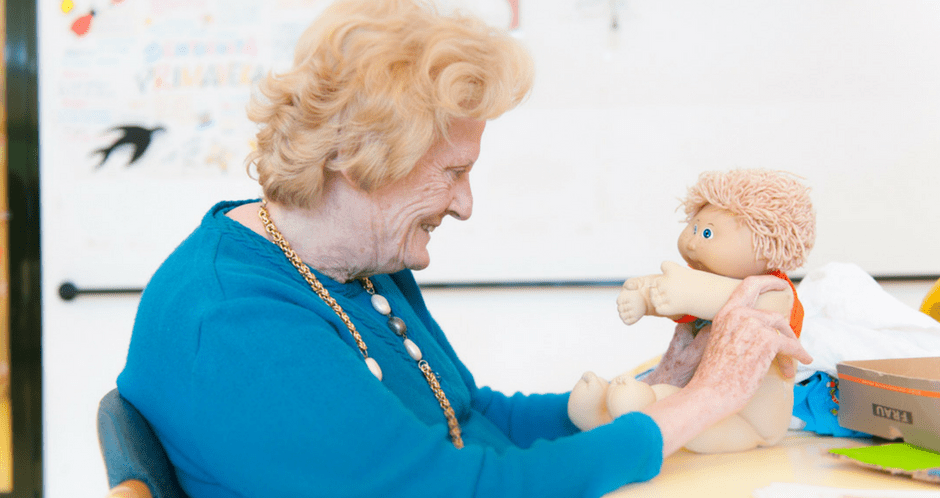
A controversial therapy option is gaining increasing popularity among nursing homes and even home care. For elderly patients who have cognitive disorders such as dementia and Alzheimer’s, caregivers and medical professionals have found some potential benefits in a therapy technique known as Doll Therapy.
Although some controversy lies in this therapy method, government studies are showing growing confirmation that this treatment method is effective in reducing some of the psychological and behavioural issues associated with chronic cognitive illnesses.
This therapy allows appropriately identified people to interact with dolls and care for them as they would a living child. Nursing centres that practice this therapy allow their residents the opportunity to rock, “feed,” change, and dress the dolls they provide for the residents. Residents may visit the centre’s “nursery” to care for the dolls. This therapy promotes a sense of fulfillment and emotional attachment for residents who may struggle with depression and lack of personal fulfillments. Caring for the dolls allows residents to feel useful and promote emotional stimulation.
Although some caregivers and medical professionals are initially hesitant to implement this therapy, many change their minds after witnessing the benefits. Jason Malone, executive director of the Beverly Hills facility, worried that this technique was too condescending for residents. In an interview with popular news outlet, NPR, he was quoted as explaining, “We don’t want to confuse treating our seniors as children.” However, when he saw the respect his staff showed toward the activity as well as how positively it was benefiting residents, his fears vanished.
Despite its benefits, there are also arguments against the use of doll therapy. This is a therapy that has not had much research, and therefore not enough empirical evidence to support its use as a mainstream treatment. Also, doll therapy isn’t for everyone – while it works for some people with Dementia, others have shown negative reactions to the dolls. One of the strongest arguments against doll therapy is the suggestions that it is “infantilising” people by treating them as children, and thus, demeaning and not treating them with dignity.
Not all therapy techniques and treatment methods are appropriate for every resident. Every person is unique and as a result, their needs–whether physical or emotional–are unique as well. Before implementing any type of new therapy, always check with a trusted medical professional or facility guidelines. Medical records and personal resident assessments from professionals are necessary before beginning new therapies such as Doll Therapy. While this technique may drastically improve some residents, it may prove negative for others with different needs.
However, if Doll Therapy is appropriate and recommended, consider these important aspects to effectively begin this therapy.
Although Doll Therapy is sometimes judged as patronising or confusing, real benefits lie in providing this opportunity to those who may need it most. This therapy is never about teasing residents or making them look foolish. Rather, it is important to allow residents the opportunity to feel loving and useful. When they are given the opportunity to care for others–even in the form of a doll–they are putting aside their worries and stressors and embracing a form of comfort they may badly need.
4
I took 30 dolls to nursing homes last Xmas that I had washed made clothes for and they were lovely. It’s so wonderful to see the reaction from both the ladies that they were given to and also the reaction of the staff. So worth all the late nights that I knitted for them. I would like to think someone might do that for me if I ever got to that stage.
Having worked in Residential Aged Care for many years I have seen the benefits of this amazing doll therapy.
Great article. Doll therapy can be very beneficial for residents living with dementia when introduced correctly, as you noted.
Reborn dolls provide comfort and a sense of purpose, but they need to be used in a dignified way.
If readers want to learn more or see examples of lifelike reborn babies in the UK, I recommend https://www.reborn-baby.co.uk